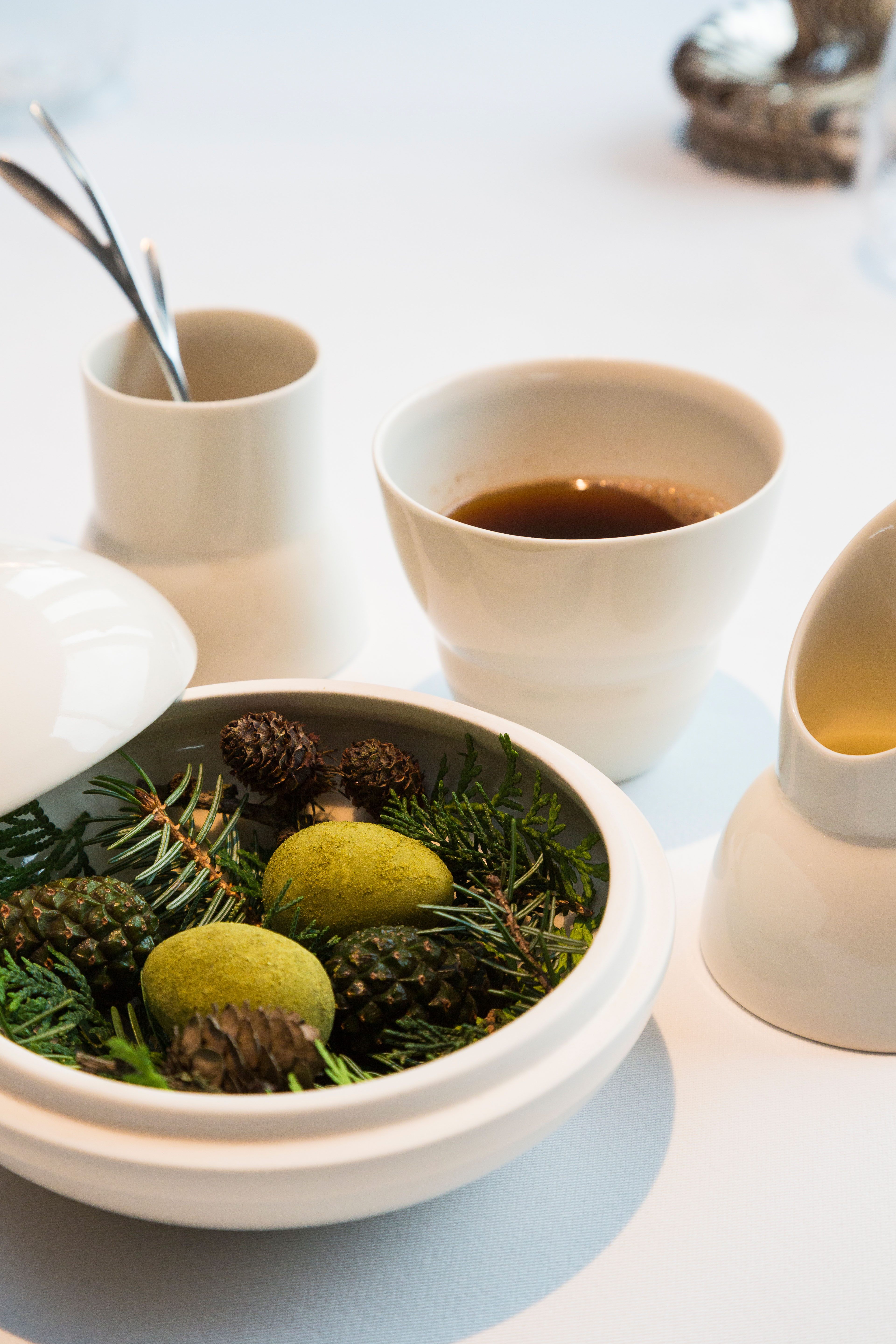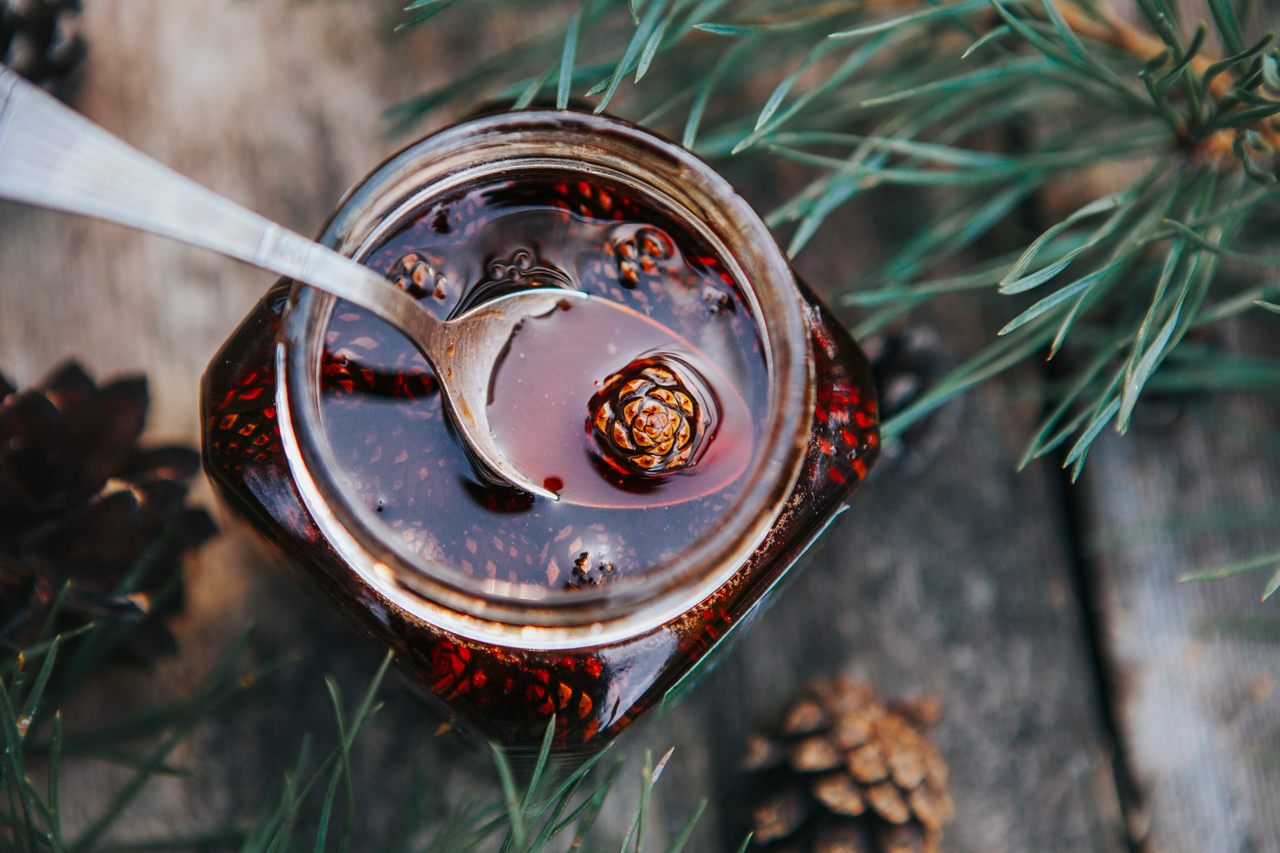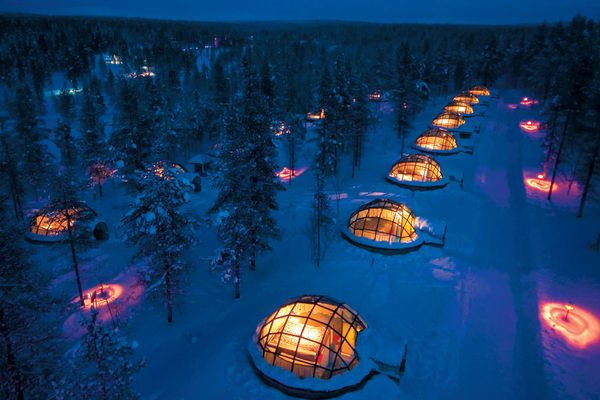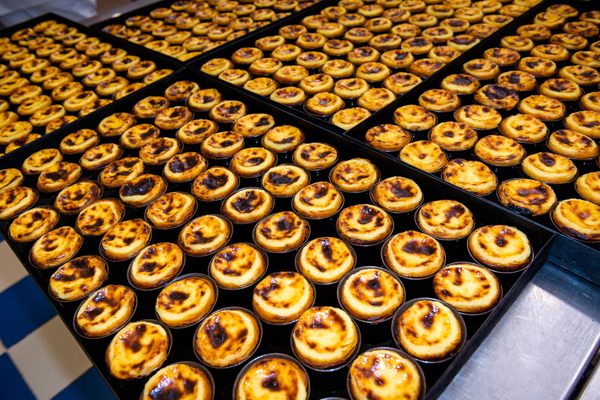In Nordic Countries, Pine Foods Have Evergreen Appeal
What was once famine food is now fine dining.
Aanaar isn’t easy for many tourists—or for that matter, food suppliers—to reach. Located in Inari, a remote municipality in Finland’s northernmost Sápmi region, the acclaimed restaurant inside the Hotel Kultahovi draws inspiration from traditional northern foods and relies on the surrounding countryside for ingredients.
Chef Dāvis Sausnītis’s team cooks with meats like reindeer, whitefish, Arctic char, and lake trout, and scours dense woodlands for seasonal fare ranging from berries and leaves to mushrooms and mosses. But one evergreen ingredient that finds its way onto the menu are the forest’s trees themselves: pine needles and shoots, pinecones, and even ground pine bark are incorporated into entrees, desserts, drinks, and condiments, providing guests with a particularly pungent taste of the outdoors.
Growing abundantly throughout the Nordic countries, pine trees have been used for millennia for building, construction, and firewood. But today, thanks to the meteoric rise of the New Nordic food movement—first put on the map in the mid-2000s by dining establishments such as Copenhagen’s soon-to-be-shuttered Noma—all parts of the pine tree, from tip to trunk, are considered fair game at avant-garde restaurants across Norway, Sweden, Finland, and Denmark.
Maaemo, a three-Michelin star restaurant in Oslo, has served patrons langoustine roasted in pine butter, glazed with a gel of spruce shoots. Guests at Geranium in Copenhagen have dined on grilled quail with thyme seeds, cabbage sprouts, and pickled pine. Until it closed in December 2022, Oaxen Krog & Slip lured customers to a rural island in the Stockholm archipelago with warm pine-bark cheese and smoked lard with pine-sprout puree, cucumber, and dried rye bread. And at Noma, gourmands sampled pinecone-on-the-cob, fudge made from pine vinegar and Douglas fir needles, and reindeer heart grilled atop a bed of fresh pine.

Foods like these aren’t new to the Nordic table. Pine-tree products have been turned into teas, extracts, lozenges, essences, tonics, and oils for centuries. “Different parts of the pine tree have long been used in many cold climates,” explains food scholar Darra Goldstein, noting that pinecones are made into jam in Siberia and needles into liqueurs and teas throughout the North. But their recent resurgence, she adds, “is all thanks to Noma’s celebrity and the New Nordic infatuation that followed. Chefs began looking to indigenous ingredients they’d previously neglected to add to their menus, and a lot of new experimentation began.”
These experiments are conducted in both kitchens and chemistry labs. Nabila Rodríguez, a gastronomic scientist at Alchemist, a two-star Michelin restaurant in Copenhagen, and her coworkers analyzed three separate species of trees in the Pinaceae family and discovered their needles all possessed distinct flavor profiles. Some were sweet; others were bitter or tasted similar to citrus. “Between the species there are huge differences,” says Rodríguez, explaining that one type might taste best in an ice cream whereas another might pair better with spirits. She envisions pine as someday being used similar to vanilla, which also ranges in taste depending on which type is used.
Pine bark, on the other hand, is “a lot more bitter and hard to work with,” Goldstein says. That didn’t stop the team at Finland’s Aanaar from creating a dessert called “Forest,” composed of pine-bark bread, berries, and mushroom ice cream, as well as pine-bark cookies with “a really, really distinct tannic taste,” notes Sausnītis.
To make pine-bark bread, chefs must cut and scrape a swath of bark from a tree trunk; afterwards, its thin inner layer, or phloem, is separated from the rough outer lower before being cleaned, roasted or soaked, and dried. The resulting product is ground into powder, mixed with wheat flour, and baked into bread.

Scholars estimate that Nordic people have been making and eating pine-bark bread for centuries. It has long been a traditional and widely enjoyed food among the Sámi people, who mainly live in northern Norway, Russia’s Kola peninsula, Sweden, and Finland. But it was also eaten by non-Sámi farmers and peasants during wars and famines, which inextricably linked it with hardship and poverty. In Finland, for example, a pine bark bread called pettuleipä was consumed en masse during the country’s Great Famine of 1695–1697.
“Pine was not, before modern times, popular among Finns, because it was seen as an emergency food. It was eaten only when it really was necessary,” says Ritva Kylli, a professor of Finnish and North European history at the University of Oulu. In Golstein’s 2015 book Fire + Ice: Classic Scandinavian Cooking, she notes that historical scientists like Swedish botanist Carl Linnaeus believed that bark breads weren’t good for humans and that stripping trees of bark would threaten the timber industry.
Negative messaging from top academics and authorities, combined with agricultural advancement, resulted in pine-bark bread becoming a distant memory for many across the Nordic countries. Kept alive, albeit under the radar, by the Sámi and living history and cultural institutions, it now fits neatly into the New Nordic movement’s goal of transforming sustainable, traditional, and overlooked local ingredients into modern culinary masterpieces.
The jury is still out regarding actual health benefits, but according to according to the Nordic Food Lab archives and forest researchers, pine phloem could be a good source of beneficial nutrients such as Vitamin C as well as dietary fiber, minerals, and carbohydrates, “Pine needles have been known to be rich in vitamins,” adds Kylli, noting that Finnish officials during World War II advised farmers to use them as fodder for domestic animals due to their nutritious properties.

Whether pickled, baked, sweetened, or used to flavor and season, pine-foods aren’t reserved for New Nordic restaurants alone. Kylli says that foraging for wild foods is increasingly popular in Finland, with some cooks using pine needles and shoots in place of cooking herbs like rosemary or making infused liquors with their forest finds.
As for Finns who want a taste of the great outdoors without venturing into the wilderness, they can pick up a pint of Jymy’s ice cream. Based in Finland, the food manufacturer began selling a limited-edition pine-flavored ice cream in 2017—the year of Finland’s centenary—based on a similar flavor first made at Grön, a Michelin-starred restaurant in Helsinki.
The treat is made from milk, cream, sugar, and pine needles, and it proved so popular in Finland and Germany, says chief commercial officer Horst Neumann, that Jymy released it again in spring 2023. Unlike chocolate or licorice, “it’s a very subtle flavor,” says Neumann. “It’s like walking into a pine forest. The air you breathe in—that’s the kind of feeling you get from the ice cream.”
Gastro Obscura covers the world’s most wondrous food and drink.
Sign up for our regular newsletter.































Follow us on Twitter to get the latest on the world's hidden wonders.
Like us on Facebook to get the latest on the world's hidden wonders.
Follow us on Twitter Like us on Facebook